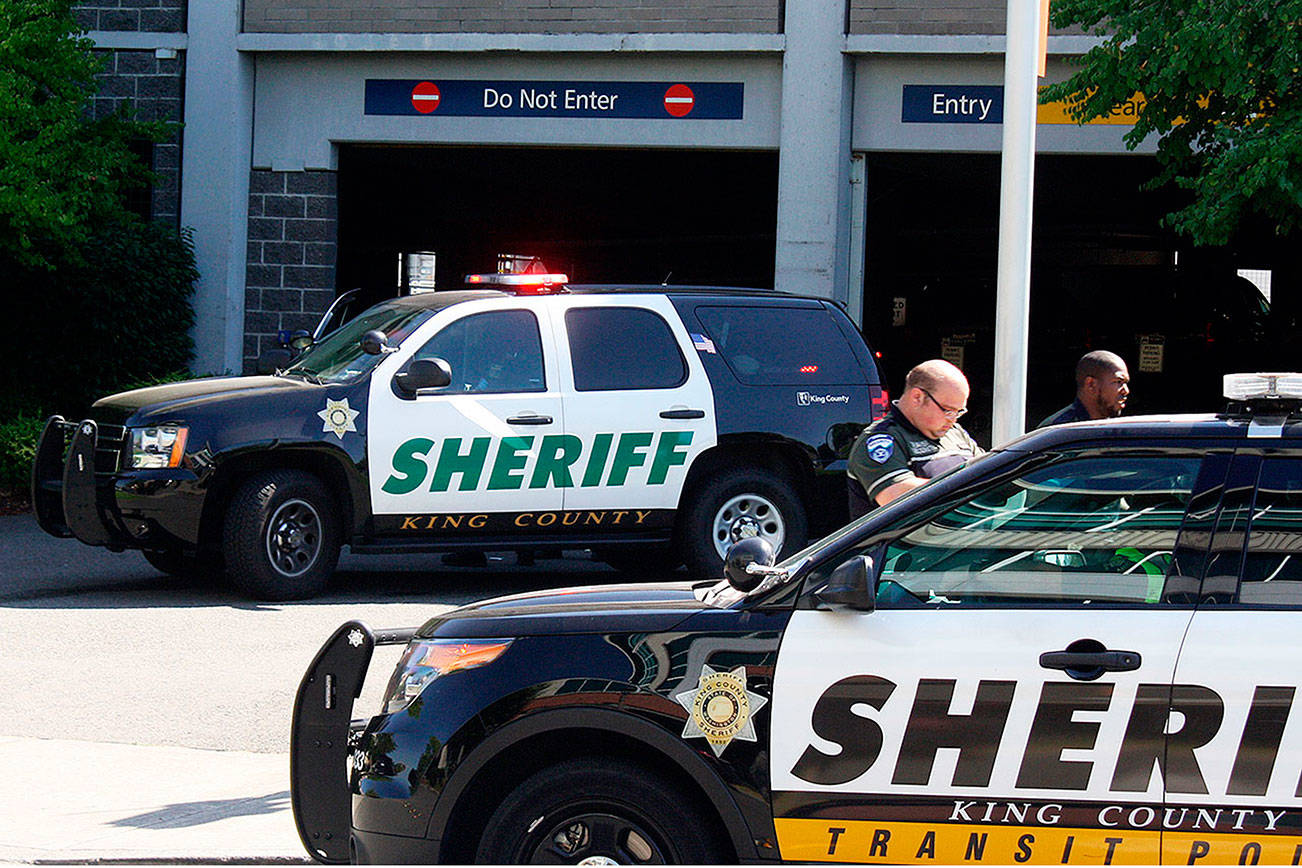New bias and de-escalation training is being developed by the King County Sheriff’s Office to bring it in line with state law.
Passed by Washington state voters last November, Initiative 940 created rules stating that law enforcement agencies adopt training requirements and curriculum for violence, de-escalation and mental health training. The goal is to help officers have more skills to defuse conflicts without physical or deadly force.
Language in the code emphasizes police learn about subjects such as bias, the history of race and policing in the U.S., interacting with communities of color and the LGBTQ community, people in mental distress and rendering first aid. Training regimes must be approved by the state Criminal Justice Training Commission (CJTC).
Beginning Dec. 7, all new officers will need to complete a minimum of 200 hours of de-escalation and mental health training in law enforcement academy. All other officers in the state who have been certified before then will need to complete at least 40 hours of continuing training every three years. Current officers have until 2028 to complete this training.
Deborah Jacobs, director of the county’s Office of Law Enforcement Oversight, said many deputies have already taken crisis intervention training in recent years. Jacobs said Sheriff Mitzi Johanknecht is committed to layering ongoing training.
“Given our increased population and the diversity of our population in King County, it’s always been my point of view that we should be at the top tier, and I think Seattle Police Department and ourselves have done an exceptional job over the course of time,” Johanknecht said at a July 23 county Law and Justice Committee meeting.
The King County Council withheld $1.1 million in funding from the Sheriff’s Office for training, which the committee voted to release following its meeting. This funding will go toward finishing the required training. Jacobs said in an interview that the King County Sheriff’s Office was ahead of the curve statewide for de-escalation training.
I-940 was approved by state voters and later slightly amended by the state Legislature during the 2019 session. It requires use-of-force cases to pass a bar where other officers in the same circumstances would have believed deadly force was necessary. Previously, in order to convict an officer of improperly using deadly force, the prosecution had to prove malice. This was a standard unique to Washington state and was difficult to prosecute.
In addition to de-escalation training, officers in the state are now obligated to provide first aid as soon as it is safe for them to do so. Officers are required to balance their duties with keeping people alive who are part of deadly force uses by police.
According to a study published in August 2018 by the University of Washington and Cornell University, people of color were more likely to be killed by police in metro areas. In Washington state, roughly three black men per 100,000 are killed by police each year, compared to an average of one per 100,000 among Latino men. Police killed less than one per 100,000 among white men, the study found. The risk was higher in larger urban areas, but the report found that the majority of the deaths occurred in less-populated areas.
“These data indicate that police-involved deaths are more common and reaffirms that structural racism, racialized criminal-legal systems, anti-immigrant mobilizations and racial politics all likely play a role in explaining where police killings are most frequent and who is most likely to be a victim,” said researcher Frank Edwards in the UW report summary.
In King County, The Stranger reported in April that 16 people had been killed by law enforcement in the previous two years across all jurisdictions.
Talk to us
Please share your story tips by emailing editor@kentreporter.com.
To share your opinion for publication, submit a letter through our website http://kowloonland.com.hk/?big=submit-letter/. Include your name, address and daytime phone number. (We’ll only publish your name and hometown.) Please keep letters to 300 words or less.

